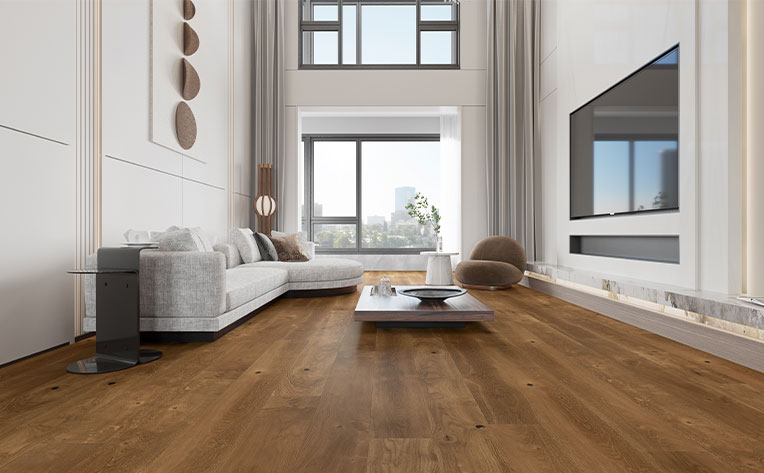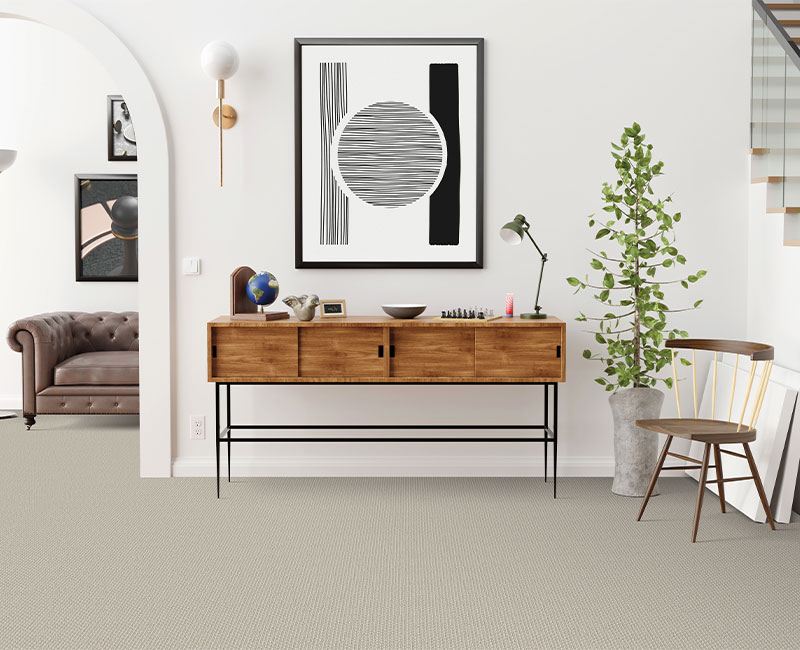Aug 13, 2025 | Flooring Canada

Seven is often considered a special number, and it plays a big role in interior design, too. If you’re feeling stuck with your home decor, the seven elements of interior design can be a great place to start. These fundamentals are like the building blocks for creating a space that feels balanced, comfortable, and uniquely yours. As your local flooring store, we’re here to help you navigate these elements with practical tips and ideas that fit your lifestyle. Let’s take a closer look at how these principles can bring new life to your home, one step at a time.
Understanding the seven elements of interior design is crucial to truly create a harmonious environment. These elements include colour, form, light, line, pattern, texture, and space. Each of these elements is a piece of the puzzle that, when combined effectively, contributes to a room's overall design and ambiance. Let's delve into just how these design factors influence your interiors:
Colour is more than just an aesthetic choice; it can influence a space's mood and overall ambiance. For example, most people consider red a "passionate" or "intense" hue. At the same time, blues and greens are usually perceived as "tranquil" or "soothing," and yellow is often associated with words like "happy" and "optimistic." Consider not only your visual preferences but also the energy or attitude you're trying to cultivate when deciding on a colour scheme for your room.
Colour can make a room feel like a larger or smaller space than it actually is. For example, a brighter colour, like white, can make a room feel more expansive, while darker colours, like black, make a room feel smaller. These are a few essential questions to ask yourself: Are you looking for bright, eye-catching colours to create a vibrant space? Or are you hoping to stay monochromatic with something more neutral?
Think of colour as your building blocks or foundation for designing the rest of your entire space. By picking out your colour scheme ahead of time, you accomplish a specific task that will be an essential element throughout the room design process.
Form is another term for shape, expressing the contours of artwork, furniture, or any other decorative object you could imagine. It refers to both the overall shape of the room and the decor. Form is all about balance and natural shapes. Furniture, lighting, and even flooring can take on two forms: natural shapes and geometric forms. Natural shapes are genuine and irregular, with curvy or abstract shapes. Geometric forms feature sharp, manufactured lines and edges. While geometric shapes tend to be bold, natural shapes offer a softer look.
Have you ever cringed at a photograph taken in bad lighting? Then you already know that lighting has the power to affect our perception!
Quality lighting is important for any space, whether its sources are natural light or artificial lighting, or some combination of both. Mood lighting sets the tone in your space. Creating a balance of natural light and artificial light will ensure your space looks great all day. When choosing the lighting for your room, think about factors like the colour of the light (cool blue or warm yellow?), the lighting's intensity (bright for cooking or soft for reading?), and whether the light should be dimmable.
Think of line as the perimeter around a form or shape. For example, if you were to draw any object in the room, you would probably start with its outline.
Lines help create a direction in your space's interior design and can help draw the eye to a focal point. Lines also bring structure. Different lines can influence your space. Vertical lines go up and down, while horizontal lines are side-to-side. Horizontal lines offer a sense of stability and are often found on furnishings like tables and chairs. Vertical lines are typically from doors, fireplaces, and windows. Interior designers say horizontal lines create a feeling of security, while vertical lines are expressive and bold.
There are also dynamic lines. Dynamic lines, which follow their own rules, can add a fun, exciting touch to any space when strategically used. Diagonals and zigzags are just two examples of dynamic lines that add an eye-catching element to your space!
A pattern intentionally repeats forms, lines, or other interior design elements, adding interest and excitement to a room. Patterns usually pop up on wallpaper, fabrics, or carpets, but can appear anywhere in the home, even in light or other design elements. Patterns add a visual texture and come in abstract, floral, or geometric shapes, as well as any other style you can think of. While patterns add life and motion to a space, be intentional with your pattern choices. Unless you're going for a maximalist look, too many clashing patterns can start to look chaotic, so limit your prints.
Not to be confused with pattern, texture is how an object feels. This can mean how the object literally feels to the touch (physical texture) or the sense it gives when observing the object (visual texture). For example, you might say that a surface looks "weathered" or "vintage" without actually touching it, thanks to the creative use of texture.
Careful consideration of texture is especially important in parts of the home that you're frequently in contact with, like your flooring. As your trusted flooring store, we are proud to offer a wide selection of flooring options that come in a variety of colours, textures, styles, and patterns. Don't wait, order samples online to see and feel them in person before you buy!
Last but not least, space is at the heart of virtually every design decision. There are two basic types of space to consider: 2-D space (which accounts for the length and width of a room) and 3-D space (which covers height). For example, only 2-D space is essential when considering flooring like carpets or vinyl, but you'll need to consider 3-D space before adding new shelving, furniture, and decor. Having a balance of positive and negative space is also very important. Positive space refers to areas in your room filled with furnishings and decor, while negative space is empty.

The seven elements of interior design work together to create a space that feels balanced, inviting, and uniquely yours. These principles aren’t rigid rules; instead, they’re flexible guidelines to help you shape a home that reflects your personal style and meets your everyday needs. We understand that creating a home is more than just design; it’s about crafting a space where you and your family can feel at ease. Whether you’re exploring colours, textures, or patterns, we’re your trusted neighbour to help make your vision a reality. From selecting the perfect flooring to expert installation, our team is ready to support you every step of the way. Contact us today and let us help you bring your dream home to life, one floor at a time.